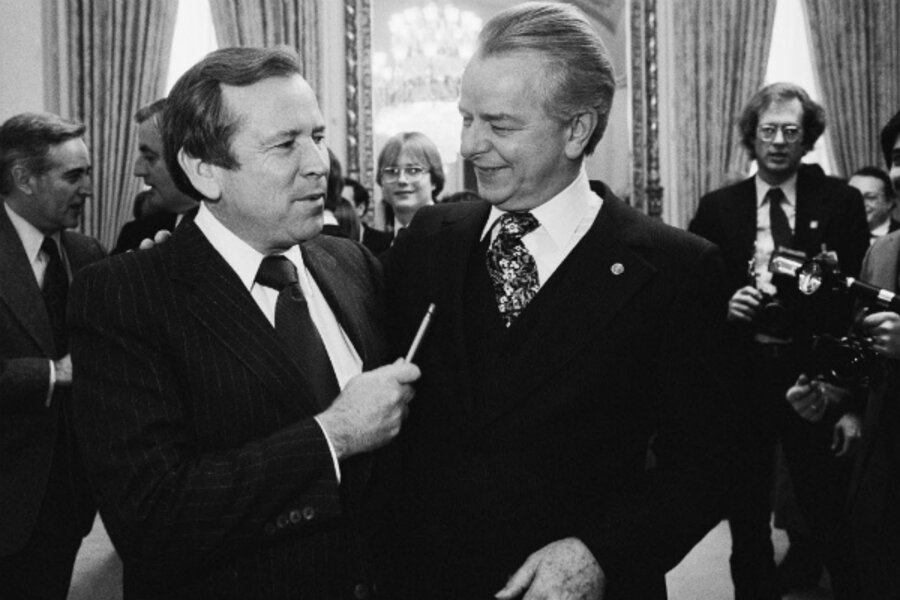Howard Baker's other passion (besides politics)
Loading...
| WASHINGTON
Sen. Howard Baker Jr. is widely recognized today as one of the great calming forces of late 20th-century American politics. He had a quality rare in public figures: the ability to see another person’s point of view – and adjust his own accordingly.
Unusually for a politician, he also had a life-long hobby to which he was devoted. That pastime was photography, a discipline that calls upon the committed practitioner to consider the effects of many different points of view. Perhaps that’s one way that the longtime Tennessee lawmaker, who passed away Thursday, learned that your work can sometimes be improved if you’re flexible.
The young Howard Baker developed a passion for snapshots in adolescence, at about the same time he first became interested in politics. Born in 1925, he began experimenting with photographic technology at about age 12, in 1937.
Things did not always go well. “He once melted the paint off the kitchen cabinets with photographic chemicals,” according to “Howard Baker: Conciliator in an Age of Crisis," a biography edited by James Lee Annis and published by the Howard H. Baker Jr. Center for Public Policy at the University of Tennessee in Knoxville.
He later joked that in the Boy Scouts he learned that he was better at taking pictures than tying knots. Friendly but introspective, Baker found that the hobby gave him the opportunity to observe and reflect on his experiences. He also earned small sums of money as a funeral photographer.
“Later his pictures served as a form of diary, but to him they were imminently more useful, as each snapshot elicited thousands of images from which he could recapture memories and gain additional insights,” according to the Annis biography.
As he rose in the US political hierarchy, Baker’s hobby also became a means of relaxation and distraction. In Washington, where Baker served as a senator for 18 years, he carried his camera virtually everywhere. His status gave him the ability to take shots behind doors closed to most others.
Ironically, he refrained from taking pictures during perhaps his most famous service to the nation. He purposely decided to leave his camera at home during the Senate Watergate hearings, where he served as a serious and bipartisan voice in proceedings almost unprecedented in American history.
“I felt that it was beneath the dignity of the event,” he said years later. “It turned out the event had no dignity and I should have taken pictures.”
Even as he rose to the position of Senate majority leader, and later chief of staff to President Ronald Reagan and ambassador to Japan, Baker kept his lenses at hand. One Kodak engineer remembers appearing at a trade fair for camera equipment at the National Geographic building up from the White House, and looking up to discover that the famous Howard Baker was one of the people wandering around asking technical questions.
In his lifetime, Baker published a number of books of his carefully composed photos, including “Howard Baker’s Washington” and “Life Through the Lens."
The cover of the latter volume is a classic Baker shot: President Reagan warmly greets wife, Nancy, on the tarmac outside Air Force One, while a phalanx of Secret Service aides stare out of the frame at another, unseen event.
You can see dozens of Baker's pictures at his still-existing photo website. They range from stunning shots of actress Elizabeth Taylor on the campaign trail to documentary photos of his many foreign travels, including those he undertook as an ambassador under President George W. Bush.
“Photographs that appeal to me are straightforward and simple and direct. Photography ... may be the only place where I can reasonably aspire to perfection,” said Baker at one point when reflecting upon his passion for the camera.








